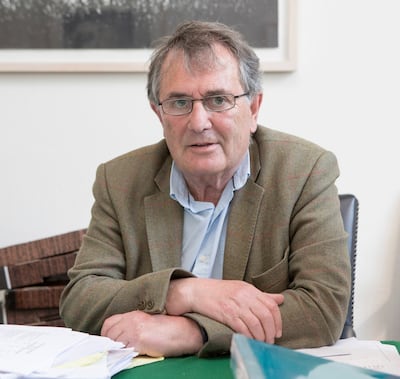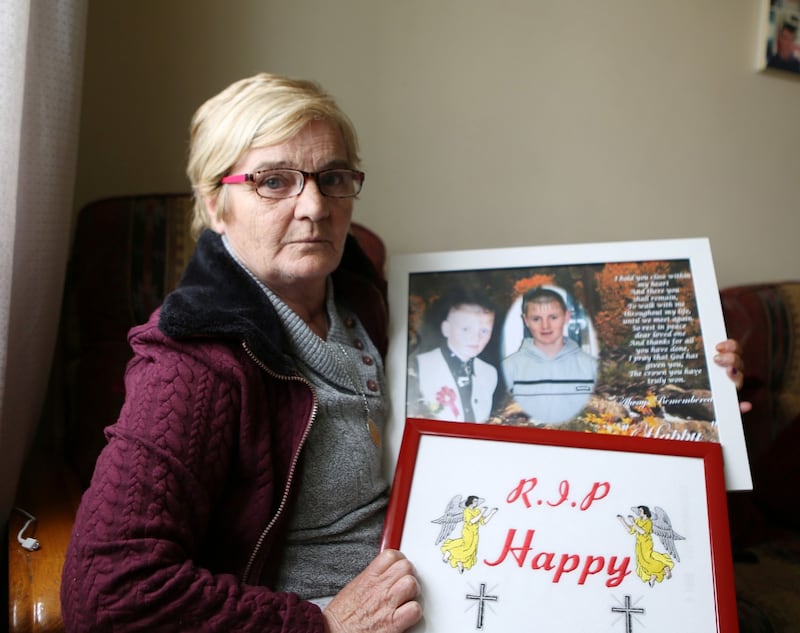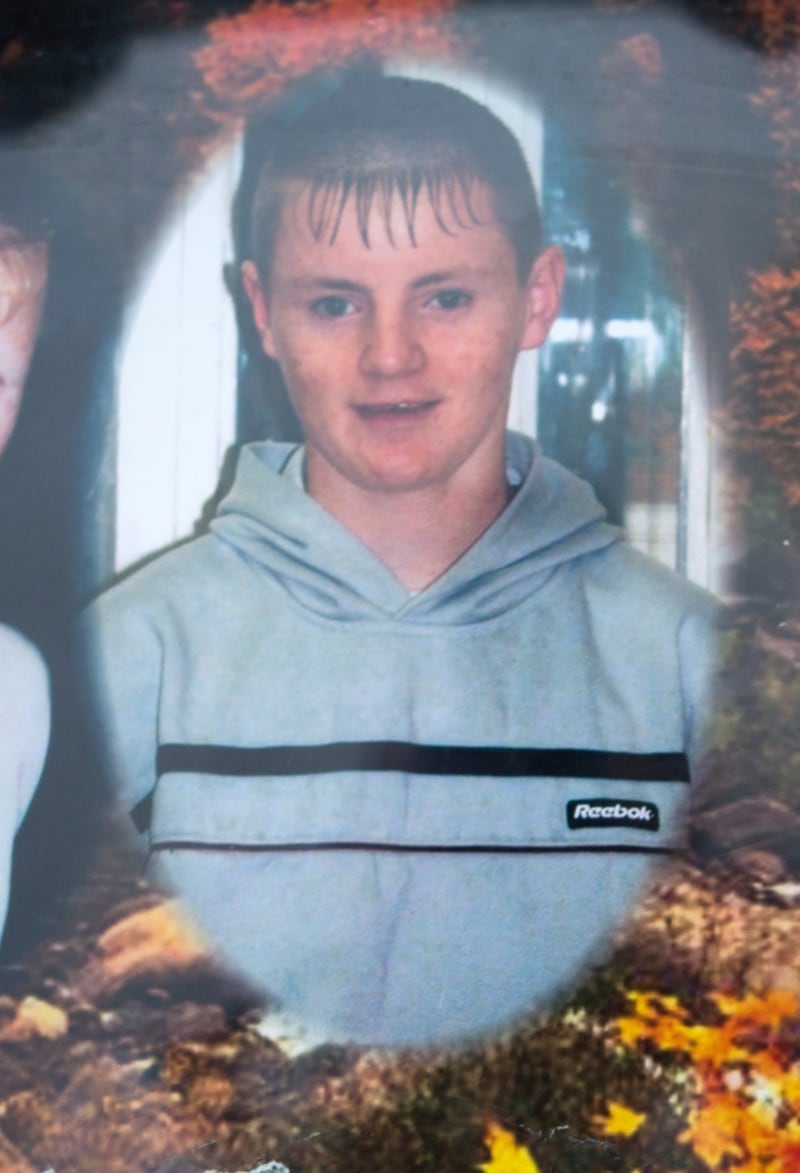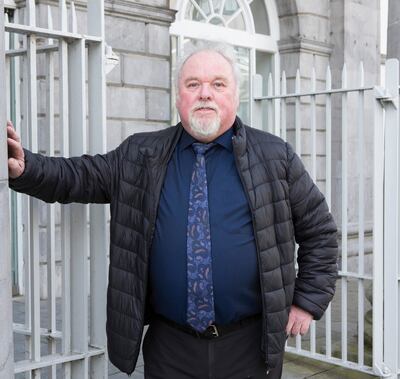Back then his two-fingered salute to photographers, as gardaí led him in handcuffs to prison for his role in the murder of Limerick gangland enforcer Eddie Ryan, showed a frightening bravado.
Today, that bravado is gone.
The killing in October 2000 sparked a decade-long bloodletting – dubbed the Keane/Ryan feud in news reports – which left 20 people dead. The carnage ended in 2010 when gardaí toppled the gangs.
In hushed tones today, a visibly nervous Coffey tells The Irish Times: “I’d rather not speak about it too much, but I have regrets, serious regrets.”
He served a seven-year sentence, after ferrying two masked gunmen in a car to a Limerick pub where they murdered Ryan. Now recovering from a heroin addiction, Coffey says he is trying to move on. He prefers not to talk about the past, which has left him living on the margins, and estranged from his family.
He took heroin to “kill the pain” and “block out” his crimes, as well as an ever-looming threat from those seeking retaliation. “It was a vicious circle,” he adds.
Despite his past, some are prepared to give him “a second chance”. Coffey has found solace in the homeless organisation Novas after he knocked on its doors two years ago, as his life spiralled downwards because of his drug addiction.
The last gangland murder in Limerick was in 2010. But the drug gangs are still in business even though the killings have stopped
“The staff have been good to me, they’ve taken me off the streets, trusted me. I’ve been so used to not being trusted all my life,” he says. “The trust I’ve been given since I came here is what has given me confidence and got me off drugs.”
Coffey is working on a farm once a week to “stay busy”. He also helps to educate fellow addicts about drugs, and he has completed a course in administering Naloxone, a medication that counteracts the effects of overdoses.
His key workers nod in agreement when he describes administering the medication that has brought a number of addicts back from the brink.
For the first time in his life, he says, he “feels good” about himself.
The staff’s investment in him, he says, has “changed my life completely”.
“I feel I have been given a very good chance, and I’m holding it with both hands. I won’t be going backward, it’s forward I want to go.”
Having survived a gun attack following his release from prison in 2010, Coffey goes on: “Everyday to me above ground is a good day, because of what I’ve seen.”
Nearly 20 years on, Coffey believes Limerick is “a better place since the peace”.
Gardaí, legal professionals, and politicians all agree. The last gangland murder in Limerick was in 2010. However, the drug gangs are still in business even though the killings have stopped.
Fallout of the feud
Sitting in his office, recently-retired state solicitor for Limerick, Michael Murray issues a sobering reminder: “We cannot rule out an outbreak of gangland violence.
“It just takes something small to kick it off, and evidence of that is what happened in Dublin, in the Kinahan/Hutch feud. The gardaí [in Limerick] have to be vigilant – they cannot let their guard down.”

Murray has paid his own price in the battle against the drugs gangs. His office was subjected to arson. He was followed and assaulted. Having received basic firearms training at the Garda firing range in Templemore, the 72 year old decided that “if I carried a gun for my own protection I would be making things more dangerous”.
The threats continued but Murray continued to work.
“I couldn’t contemplate resigning. I felt I would have made the position of other state solicitors, maybe, untenable, because the criminals would suddenly realise this was an easy way to nobble a trial,” he said.
Murray argues “gangland violence [never] really interfered with the economics of the city centre because it was confined” to deprived suburban pockets.
“What it did do was harm the city’s image, but those who did take the opportunity to work and live in Limerick, in those times, soon realised that life was a lot different than what they may have perceived,” he adds.
Complacency, however, is the enemy. Some gang leaders have been jailed, but there are youths “coming up with violence in their DNA”. Current leaders, however, have made a “business decision” to maintain a ceasefire.
'There were 115 shooting incidents per year in 2007 and 2008. Sometimes there could have been five, six, seven a night. By 2013, that had come down to eight'
“They realise that fighting is counter-productive and brings down too much heat on them”, he goes on, adding the deployment of a full-time Garda armed unit has kept a lid on tensions rising.
Newly-appointed Chief Supt Gerry Roche, who has increased resources given to the Divisional Drugs Unit, praises the Criminal Assets Bureau and Revenue for targeting the gangs’ wealth.
Previously, Limerick’s gangs operated in the full glare of the public. Today, Roche agrees with the former chief solicitor that they are now trying to operate “under the radar”.
“Before you had the Dundon [gang]. and Collopy [gang] and they thrived off [notoriety]. They were sociopaths. Now [the gangs] are more anxious to stay under the radar.”
However, Roche is under no illusion about the threat they pose. Presently, there are approximately “half a dozen [gangs], but they are not as well known as previously, they’re not operating in your face as much, not as brash.”
In response, the Armed Support Unit (ASU) has graduated from “overt” to “covert” policing: “They are there for us and they are ready to respond,” says Roche.
The actions of the Criminal Assets Bureau (CAB) “means those guys who were in the big four-wheel drives, flashy cars, and flashing the money in communities, is not happening anymore. This is not to say it’s not there, under the surface. There are people making vast amounts of money on drugs and criminal activity. We know that.”
Roche has increased the Garda numbers in the Limerick divisional drug unit by 40 per cent in the past six months, he says: “Detections are up 40 per cent. We have 59 people caught for sale or supply in the last three months.”
The real success of the crackdown on gangland however, is illustrated by the 100 per cent reduction in shooting attacks in recent years, prior to Roche’s appointment as head of the division.
“There were 115 shooting incidents per year, in 2007 and 2008. Sometimes there could have been five, six, seven a night. It was fairly frantic at the time.” By 2013, that had come down to eight” he says. Last year, there were three.
'It's a history that is not that old. The fallout of the feud has been drug use; trauma; displacement of families'
Cannabis is quite widespread, and cocaine and heroin are very common. Of the main suppliers, aligned respectively to the Keane and the McCarthy-Dundon groupings, one has survived a murder attempt, while the other lives in the UK in an attempt to keep a low profile.
And for every dealer, there are addicts. A former Limerick businessman, speaking under anonymity, told of how he lost everything because of his addiction to alcohol and drugs.
The father of one ended up in a Greek prison after “smuggling hash” into the country from Holland: “I was 16 or 17 when I first started drinking alcohol. Then I moved to London and I got into hash ... and then heroin.”
Currently “clean” from drugs, he sees a new generation of addicts, or soon-to-be addicts in the city “popping street tablets like Smarties”, while “cocaine is on the rise”.
The Ana Liffey Drug Project in Limerick offers an addiction service for the mid-west, including a needle exchange programme and assessment for residential treatment.
The project’s Aoife Marshall said the gangland feud has left trauma in its wake:
“It’s a history that is not that old. The fallout of the feud has been drug use; trauma; displacement of families.”
Like others, she points to the rise in cocaine use, but not all of the drugs are coming from abroad – an increase in home-manufactured tablets has created new risks, as the ingredients mix is “largely unknown”.
Victims’ stories
Despite the cessation of violence, the families of those ruthlessly killed by the gangs continue to suffer.
Richard “Happy” Kelly, a 17 year old from Southill, went missing on April 24th, 2006. His skeletal remains were discovered over a year later in a lake.
Richard had a mild learning disability and was a well-known joyrider, but was not involved in serious organised crime.
He paid the ultimate price after he stole and burned out a car, not knowing that it contained a valuable haul of drugs belonging to the Dundons.

Today, Richard’s mother Mary says she feels she is the one “serving a life sentence” of grief, while her son’s killers still evade detection.
Focussing on a makeshift shrine of photographs of her dead son, which she prays to every day, Mary (59) tells The Irish Times: “My life was completely changed, I never got to say goodbye to him. He had a closed coffin.”
“I keep hoping that he is going to walk back in the door to me.”
A qualified childcare worker, who 20 years ago helped to set up the Southill After-School Centre to help other local children, says her work in the community keeps her “sane”.
“I’ll never forget the last time he walked out the door, and he said, ‘I’ll see you Ma, love you’; Those were his last words to me. I’ve never accept that he’s gone.”
Nodding towards a collection of photographs of her son displayed in her kitchen, she adds: “I have an altar there, and that altar is for him and it’s there since the day he went missing. Everyday there’s a candle lighting for him and for anybody else’s intentions.”
She would “not wish it on anybody... to bury a child”.
Thirteen years on and with no apparent leads in the Garda investigation into her son’s murder, she makes another desperate appeal for witnesses.
“He didn’t deserve what he got. I’ll leave it in the hands of God. How they can live with what they did to him? And how they can sleep at night? Because I don’t sleep.”

Seán Poland’s siblings, Ray and Marie have also appealed for help in bringing his killers to justice, 17 years after his murder.
Nearly two decades on they are left with “more questions than answers”.
Seán, a second-hand car dealer from Blackwater, Ardnacrusha, Co Clare, was shot dead at his home on New Year’s Eve, 2002. His family believe he was killed during a botched robbery by members of the Dundon gang.
His siblings believe Seán, who had no criminal links, unwittingly sold a car to the gang for €2,000 in cash at the Roundhouse Pub, Limerick city on the night he died.
It is believed the gang later followed him back to his house to rob him.
When Seán answered the front door to the gang they shot him and he died almost immediately.
However, even though the house was ransacked “the [€2,000] was still inside in his back pocket, when he was found by gardaí”, says Marie.

Today, Ray believes the Garda investigation into his brother’s killing has been “left on the shelf”, while the Garda pushed resources into stopping gangland feud killings – a charge denied by gardaí.
“Seán was a gentle giant, he wouldn’t have harmed a fly. All he wanted was to sell a few cars and have a couple of pints, and enjoy himself, and he wasn’t left do that.”
Life for them, and their other brother Liam has “been hell”, says Marie.
“It’s the only way to put it. Hell. We have no answers.
“Nearly 17 years have gone by now and, surely to god, at this stage of their lives [witnesses] have got older and they have a conscience.
“Will somebody please speak up and let the gardaí know, or let any of us know what happened that night.”
Insisting that all cases remain open, Roche says “If we can advance them at all we try to do that. It’s important for families to feel that we haven’t forgotten about them. And we haven’t.”
Fightback
Despite it all, Limerick has fought back in the past decade, helped by a €1.5billion investment and a boost of 15,000 jobs over the past four years.
City and County Manager, Conn Murray has led the charge: “We try to give people jobs in order to give them a hope and an opportunity to participate in their own community.”
The regeneration of local authority estates in Southill, Moyross, St Mary’s Park and Ballinacurra Weston – all traditionally deprived areas – are undergoing a €28 million-a-year makeover by the State.
'Drugs are still a huge problem in Limerick. The fact that people are no longer going around shooting one another doesn't mean that they're gone out of business'
So far, nearly 300 new modern homes have been built in them, while 907 of the 1,462 homes across the estates were better insulated by the end of March 2019.
The City and County Council created its own development company, borrowing more than €200 million to kick-start investment in the city centre.
Through its acquisition and establishment of the Troy Studios site, hundreds were employed for the making of the NBC-Universal-Netflix co-produced sci-fi series, Nightflyers, inspired by Game of Thrones creator George RR Martin.
“We are in a much better position than we were 15-20 years ago. Limerick has changed and continues to evolve as a university city, a diverse economic city, but also, as an area that’s balancing the social deprivation that has existed in the past with the opportunities that are being presented for the future,” Murray says.
By 2040, the city’s population is expected to rise to more than 200,000. Planning permission has been granted for the €180m Opera shopping and residential district, and the €17.6m Gardens International offices development opened last month.
“You wouldn’t even have to go back [as far as the 1980s and 1990s] to see just how depressed Limerick was. It’s a vibrant city now, it’s got ambition and drive,” says Murray.

Nearly ten years ago to the day, former mayor of Limerick John Gilligan, who is bowing out of local politics this month after three decades, led a 5,000-strong march through the city to convince the gangs they were not wanted.
Today, Gilligan believes drugs are “still a huge problem” in Limerick: “The fact that people are no longer going around shooting one another doesn’t mean that they’re gone out of business.”
However, Gilligan, whose home was previously attacked by the gangs, is upbeat about the future: “I can’t see it going back to the way it was unless the State allows it to.
“I hope the people of Limerick will always scream as loud as we did a few years ago to say the same thing – that these people do not represent us, that this is our city, not theirs.”















